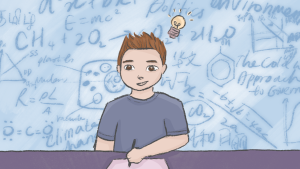
Top Mistakes Tutors Should Avoid When Teaching Reading

Reading is a vital factor in a child’s learning process. It is where they learn new terms and ideas, as well as understand concepts not just in stories but also in other subjects such as Science or Math. Without the proper reading comprehension techniques, the child may get confused or not fully understand what he/she is reading and if left unattended, they can also bring this with them in the future.
For children, reading skills should be ingrained to them at an early age and should be developed as they continue to the next level in their education. Reading not only helps them understand texts but it also helps develop their patience since they have to start slowly before they can fully understand what they’re reading. Effective reading skills also teaches the child to become meticulous about publications and practice effective memorization to remember the ideas he/she has read.
Teaching a child to develop a reading habit isn’t as difficult as it seems. Of course, as home tutors, children will be prone to shorter attention spans, which is why teaching them reading should be done effectively so it wouldn’t drag on until the child loses their interest. However, even if it is relatively easy, there are still some mistakes that home tutors should be aware of when teaching reading to a child.
We’ve listed done some mistakes home tutors should avoid doing when teaching reading to their students.
1. Ask few questions
As everything should be, tutors shouldn’t immediately delve into the topic with the child without any proper introduction. If the tutor just gives the topic instantly to the child, they wouldn’t have any sort of anticipation or have time to form their thoughts about the topic. It’s important to ease the child into the lesson, as it promotes interest and could also retain their learning more.
When teaching a child how to read, don’t instantly get into the narrative of the story. You can read with the child and let them formulate or predict whet the tale is all about or what are the events to follow. Tutors may get on with reading the story immediately while not giving the student more time to totally absorb the story. By reading with them and letting them make their predictions, it gives them the understanding of “cause and effect relationship” in reading that they will also learn later on in higher grade levels.
While reading too, tutors shouldn’t hesitate to ask students what they think will happen next or at the very beginning before starting the story. They can also ask what they think the story will be about based on the title. It helps the child make their own thoughts and opinions, thus making it easier to comprehend the story when they have predictions, and it also gives them the chance to think independently.
2. Don’t reread with the child
Some tutors may want to immediately move on to the next piece of text right after finishing the previous one. When teaching reading to students, don’t skip on revisiting and rereading the text again. Repetition may be a good thing, especially when teaching reading to children. Tutors can revisit difficult words that were met in the text and ask the child to give the meaning of the word or use it in a sentence.
Additionally, tutors can also ask the child more questions about the text that will show how well they’ve understood what they’ve read. Reading without understanding defeats the purpose of reading as there is no comprehension happening. However, make sure to keep the questions to those that will open their independent line of thoughts and help them retain what they’ve read.
As mentioned before, repetition can also benefit the child. When we do things many times, we tend to get used to it and understand it more. This is why rereading the text with the child can help them make use of the words and phrases they’ve learned and continue to use and reuse them. That being said, it can also help if the sentences or words are to be read aloud so they can also say them with confidence.

3. Choose high level reading materials
Tutors can get too excited especially when personal preferences are involved. They can get carried away with selecting the reading materials for the child to practice reading. However, they should keep in mind the age group that the child belongs in. If they immediately jump into high level reading materials such as Shakespeare, the child will only get confused with the words used in the text. (Tutors know how much Shakespeare loves to make up words.)
Select a book that’s age appropriate and will catch their interest and attention to help them grasp the words easier and understand what is written in the text. Texts like this also use words and phrases that the child can easily pick-up and use in everyday conversation.
4. Don’t interrupt the child
When teaching reading, of course, there will be times the child will stumble with new words and pronunciation. They can read words wrong or they can be unable to read the words entirely. However, even when they make these mistakes, don’t interrupt the child while they are reading. Instead, keep notes on which words they had trouble pronouncing or reading and teach them the correct way to say or read those words only after they finished the text.
Children sometimes have a pattern with words that they have a tendency to have trouble in. Because of this, the tutor should wait until they are done so they can correct those mistakes. Additionally, they will also lessen the chance of a child feeling ashamed with their mistakes. When they are interrupted during reading, they may feel embarrassed with their mistake and can close off or lose interest in reading.
5. Put the book down and move on
As mentioned before, rereading is important. And that also means that switching to a different text immediately after reading the previous one is not advisable. Give time for the child to give out their thoughts on the text and even ask questions if there are some parts they didn’t understand. It helps clear out any confusion on the child’s side, while also helping the tutor see if they child is indeed paying attention to what they are reading.
6. Read about the same topics
Children, especially younger ones, have fixations that affect even the books they want to read. Like adults, they also have their own preferences, interests, likes and dislikes. When picking out books or texts, tutors will think to sticking to the topic the child is interested in. Unfortunately, it can get repetitive through time and the child may also lose interest in the topic or the book.
Tutors shouldn’t be hesitant to explore topics other than those the child favors. However, they can still choose topics that relates to the interest of the child. For example, if the child is especially interested in astronauts for the time being and love playing astronauts with their friends, tutors can also introduce books talking about the solar system or stars. This will sustain their interest in the books while also exploring more of their interests.
7. Ignore character voices
Tone helps in building interest in the text written. When teaching a child reading, tutors shouldn’t sound monotonous. Children’s books’ stories have more dialogue that can be used to make reading more fun for the child. By varying the tones, emotions, intonations, and even making up faces and expressions to the child, it provides them with more idea how the story is going and they can also understand what is happening better. They can also figure out some key characterization from the changes of the voice of the characters. Additionally, it also makes reading more fun and interesting. If read monotonously, any texts can become boring especially for children.

8. Ignore illustrations
Some children may be visual learners, meaning they learn more by seeing rather than hearing or they can understand what they’re hearing better with visual representation. When going through a story book, tutors can help clarify the illustrations inside the book to the child and help them understand how that ties to the story. Tutors can ask the child to point out the characters in the story on the illustration. They can also ask the child for their opinions of the characters or the story based on the illustrations.
There can be ties that the text used can have no illustrations. In times like this, also take note of the age group the child belongs to. If they are in pre-school, they will tend to want more visual representations, so the tutor can look for illustrations that may match the text. If they are in the higher grades, the tutor can ask the child to use their imagination or even draw what they think the character looks like.
Conclusion
Teaching students reading is easier with the right techniques to maximize the process and make things easier for the tutor and the child. While there can still be road bumps faced by the tutors when teaching a child, the above tips will surely help make reading more fun for the student and easier for the home tutor.

Carelle
Carelle is a teacher who has been through the ups and downs of the teacher and learner life. She wishes for every learner to gain educational satisfaction that will help embody the people they want to be in the future.
Tell Carelle Below What You Think About Her Post!

About FamilyTutor!
FamilyTutor is an established home tuition agency in Singapore! We match suitable home tutors for our clients not just to improve the students' academic grades, but also to build a strong rapport and meaningful relationship with the students and even the their whole family. FamilyTutor put every student in good hands!
If you need an excellent home tutor, feel free to call/WhatsApp us at +65 8777-2168! Our matching service is free!
Related Posts!
Follow Us On Facebook!
Our Service!
- Home Tuition in Singapore
- Home Tutor in Singapore
- Home Tuition Rates in Singapore
- Preschool Home Tuition
- Primary School Home Tuition
- PSLE Home Tuition
- Secondary School Home Tuition
- ITE Home Tuition
- N Level Home Tuition
- JC Home Tuition
- A Level Home Tuition
- Polytechnic Home Tuition
- University Home Tuition
- A-Math Home Tuition
- Biology Home Tuition
- Chemistry Home Tuition
- Chinese Home Tuition
- Economics Home Tuition
- English Home Tuition
- Geography Home Tuition
- H2 Chemistry Home Tuition
- Higher Chinese Home Tuition
- Hindi Home Tuition
- History Home Tuition
- IB Chemistry Home Tuition
- IP Chemistry Home Tuition
- IP Math Home Tuition
- IP Home Tuition
- JC Chemistry Home Tuition
- Literature Home Tuition
- Malay Home Tuition
- Math Home Tuition
- O Level Chemistry Home Tuition
- O Level Math Home Tuition
- O Level Physics Home Tuition
- Online Home Tuition
- Physics Home Tuition
- POA Home Tuition
- Science Home Tuition
- Tamil Home Tuition
Education Levels
National Exams
Math & Science Subjects
Language Subjects
Japanese Tuition
Korean Tuition
German Tuition
Humanities Subjects
Social Studies
Chinese Literature Tuition
About Us
FamilyTutor is an established and the people’s favourite home tuition agency in Singapore! We match a suitable tutor for you not just to improve the student’s grade, but also to build a good rapport and meaningful relationship with the student and even with the student’s whole family! With FamilyTutor, every Singaporean son & daughter is in good hands.
Contact Us
- 8777 2168
- 8777 2168
- Mon-Sun 9am-10pm (Including PH)
- contactus@familytutor.sg
- 17 Petir Road Singapore 678278



